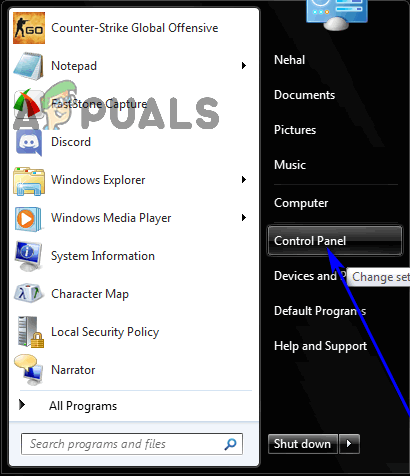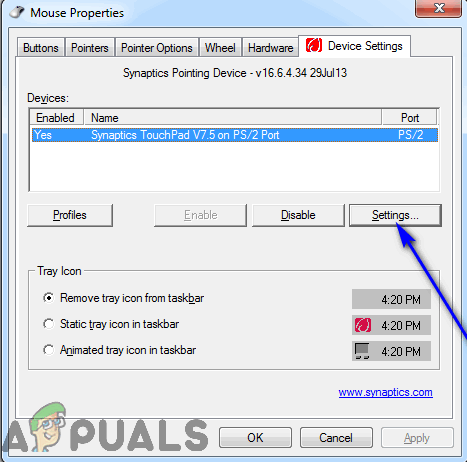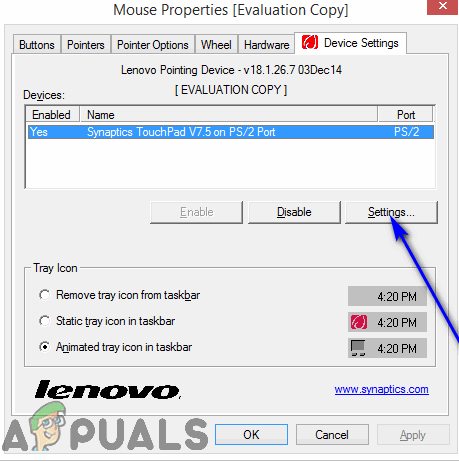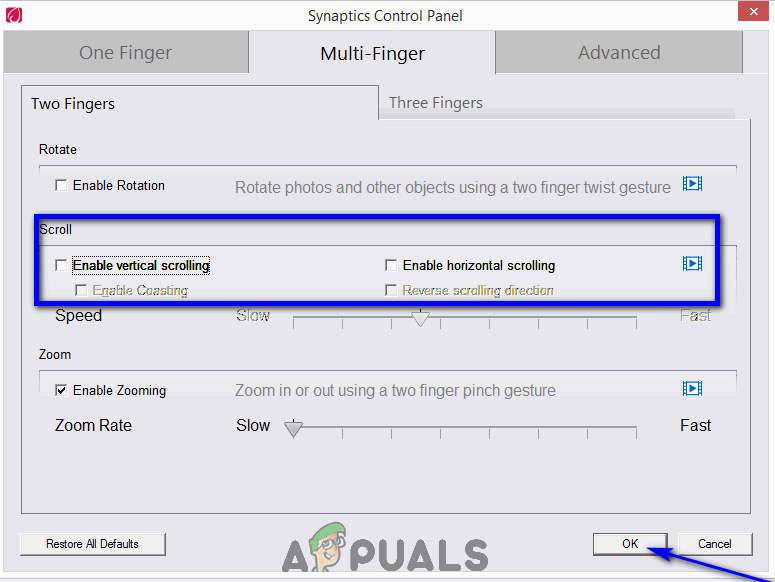How to Scroll With a Touchpad
Desktop computers and laptops are worlds apart in terms of hardware configuration. Among the many differences between desktop computers and laptops exists the fact that, by default, laptop users use a touchpad instead of a mouse to move the pointer they see on their screens. Of course, laptop users can attach an external mouse and use it as an input device for their pointer, but the default mouse pointer input device for all laptop users is a touchpad. A touchpad isn’t some other worldly technology – you move your finger on the touchpad to move the pointer on your screen accordingly, and you use the hardware right-click and left-click buttons to perform clicks (or, you can simply tap on most touchpads to perform a click).
What many have trouble with when using a touchpad, however, is scrolling. How are you supposed to scroll using an input device that doesn’t have a scroll wheel? Well, you could always use the arrow keys on your laptop’s keyboard to scroll. Alternatively, you can click on the arrow keys on a vertical or horizontal scroll bar within a program or application to scroll, and you can also click on a vertical or horizontal scroll bar to select it and move your mouse pointer (with the click still held) to drag the scroll bar and scroll in the desired direction.
However, the question still stands – how do you scroll with a touchpad? Fortunately, it is entirely possible to scroll using just your touchpad and nothing else on almost all the different touchpad brands that exist. Provided that the touchpad on your laptop supports touchpad scrolling and that the option is enabled in the touchpad’s settings/preferences, the following are some of the most common ways that can be used to scroll on a touchpad:
Method 1: Single finger scrolling
This method has been found to be most effective on touchpads that already have scrolling lines (dotted or un-dotted lines usually located on the right side and, in some cases, bottom of touchpads) embossed on them.
This method even works on some touchpads that don’t have any visible scrolling lines – in such cases, all you need to do is simply move your finger across the general area the scrolling line is usually located in on touchpads. In order to scroll with just one finger, you need to:
- Place one finger on a vertical or horizontal scrolling line on your touchpad (or the general area the scrolling line would be in if your touchpad had one).
- Drag your finger in the direction you want to scroll, and the display should scroll in that direction.
Method 2: Double finger scrolling
Double finger scrolling is known to be most commonly supported on touchpads that don’t have scrolling lines. There is no need for a specified area on the touchpad for scroll input when it comes to double finger scrolling because it is an entirely different and distinct input method – you use two fingers instead of just one, and the touchpad easily recognizes this as you attempting to scroll as you don’t need to use two fingers for any other forms of input. Here’s what you need to do to scroll on a touchpad using two fingers:
- Place two of your fingers on any part of your touchpad (be sure to leave enough space in every direction for you to move your fingers). Make sure that you leave a fair bit of space between your two fingers – leave very little or no space and the touchpad will end up registering your two fingers as one and you will just move your mouse pointer instead of scrolling.
- Simultaneously move both of your fingers in the direction you want to scroll in. You would need to move your fingers up and down your touchpad to scroll vertically, and across the touchpad to scroll horizontally.
Most touchpads that support virtual scrolling have it enabled by default. However, in the event that scrolling is disabled on your touchpad, you are going to have to enable it before you can actually scroll using your touchpad. Here’s how you can enable virtual scrolling on some of the most popular makes of laptop touchpads:
On Synaptics touchpads
- Open the Start Menu and click on Control Panel. Alternatively, if you are using Windows 8, 8.1 or 10, right-click on the Start Menu button to open the WinX Menu and click on Control Panel.


- With the Control Panel in Large icons view, click on Mouse.

- Navigate to the Device Settings tab.
- Click on Settings….


- If you’re using Windows 7, check the checkbox next to the Scrolling option, and click on Apply and then on OK. If you’re using Windows 8, 8.1 or 10, navigate to the Multi-Finger tab, check the checkboxes next to the Enable vertical scrolling and Enable horizontal scrolling options, and click on OK.


- Click on Apply and then on OK.
On ALPS touchpads
- Open the Start Menu and click on Control Panel. Alternatively, if you are using Windows 8, 8.1 or 10, right-click on the Start Menu button to open the WinX Menu and click on Control Panel.


- With the Control Panel in Large icons view, click on Mouse.

- Navigate to the Gestures tab.
- Check the checkbox next to the Use Vertical Scroll Function and Use Horizontal Scroll Functions options or the Use Scrolling option or whatever applies.

- Click on Apply and then on OK.
If the touchpad your laptop has is of a different make, fear not – all you need to basically do is make your way to the settings or preferences for your laptop’s touchpad and locate and enable an option or pair of options for virtual scrolling. In most cases, this option is titled something along the lines of “Virtual Scrolling” or “Scrolling”, or comes in the form of a pair of options known as “Horizontal Scrolling” and “Vertical Scrolling”. Provided that the touchpad your laptop has supported virtual scrolling, you simply need to locate your specific touchpad’s virtual scrolling feature and enable it, and you will be able to successfully scroll using your touchpad and nothing else.





